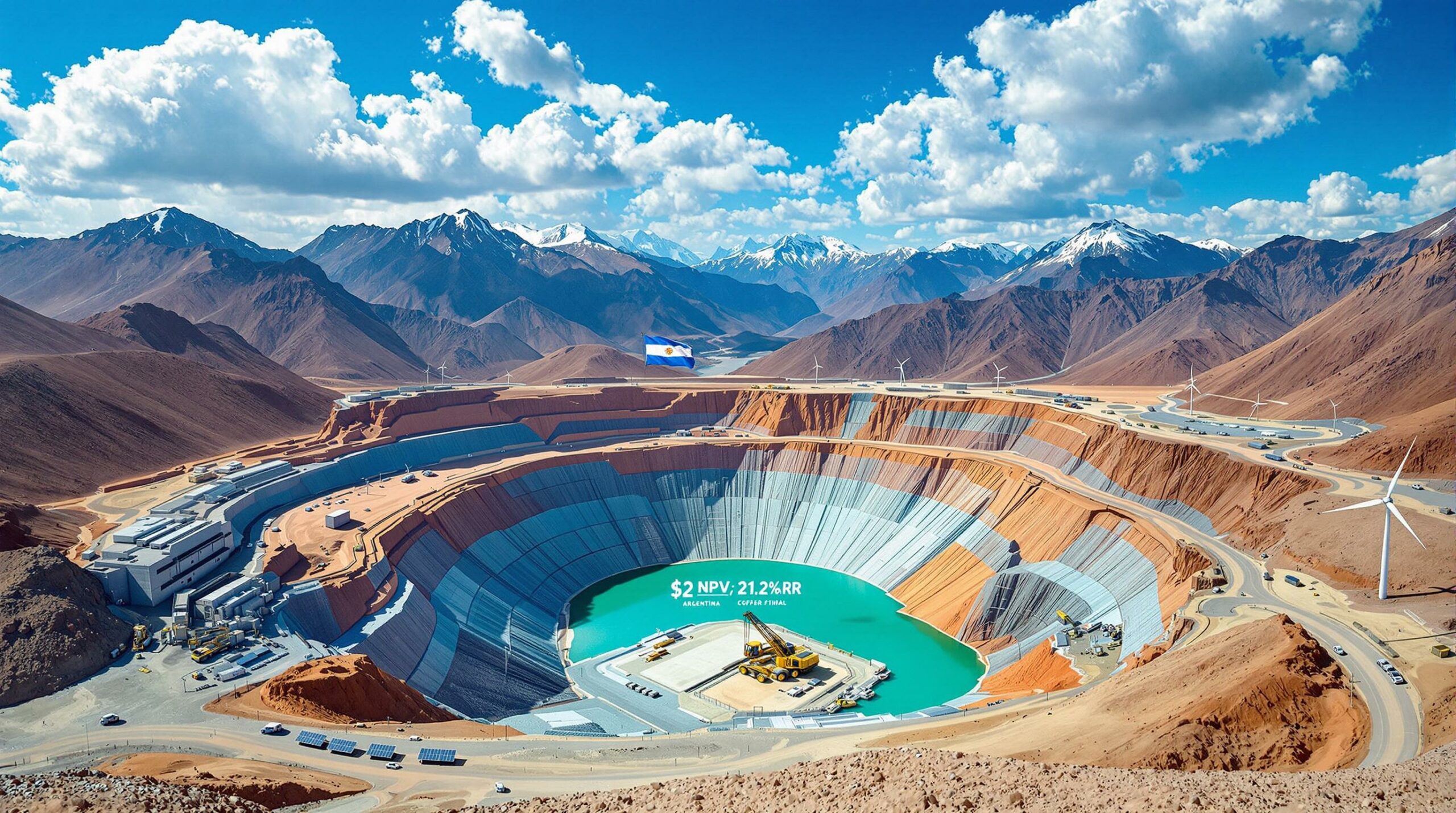What is Final Pit Design in Open-Pit Mining?
Final pit design represents the ultimate boundaries and configuration of an open-pit mine that will exist throughout its operational life. It's a critical engineering process that determines exactly where and how mining will occur, balancing technical feasibility with economic viability while addressing safety and environmental concerns. A well-executed pit design directly impacts project profitability, operational efficiency, and long-term sustainability.
The final pit design essentially creates a three-dimensional blueprint that mining engineers will follow for years or decades. It establishes bench heights, slope angles, haul road locations, and extraction sequences that maximize resource recovery while minimizing costs and risks.
Definition and Importance of Final Pit Design
The ultimate pit limit represents the theoretical maximum extent of economically viable mining, but the final pit design transforms this mathematical boundary into a practical mining plan. While optimization algorithms identify economical ore, the final design incorporates real-world constraints that algorithms alone cannot address.
Final pit designs are crucial because they:
- Define economic viability – Determining which portions of the deposit can be profitably mined
- Establish safety parameters – Creating stable slopes and proper benching configurations
- Guide infrastructure placement – Positioning haul roads, dewatering systems, and crushing facilities
- Influence environmental impacts – Controlling drainage patterns and rehabilitation requirements
- Set production timelines – Sequencing extraction to optimize cash flow
A properly optimized pit design can increase a project's NPV by 15-25% compared to suboptimal designs, making it one of the most financially impactful engineering processes in mining.
How Final Pit Design Differs from Preliminary Designs
Final pit designs evolve from conceptual and preliminary designs through iterative optimization processes. The key differences include:
| Design Stage | Primary Focus | Level of Detail | Key Parameters |
|---|---|---|---|
| Conceptual | Resource potential | Low | Basic pit shells, approximate stripping ratio |
| Preliminary | Economic viability | Medium | Nested pit shells, preliminary slopes |
| Final | Operational functionality | High | Detailed bench designs, precise haul roads |
While preliminary designs focus on broad feasibility using simplified assumptions, final designs incorporate:
- Detailed geotechnical assessments based on extensive field testing
- Precise economic evaluations using refined cost and revenue models
- Specific operational parameters matched to selected equipment
- Comprehensive environmental and closure requirements
This progression ensures that the ultimate mining plan addresses both immediate production needs and long-term project objectives. The final design typically requires 6-12 months of engineering work for complex operations, representing the culmination of years of exploration, analysis, and modern mine planning.
How Do Geological Factors Influence Final Pit Design?
The foundation of any successful pit design lies in a thorough understanding of geological conditions. Geological factors determine not only where valuable minerals exist but also how they can be safely and economically extracted.
Ore Body Geometry and Mineralization Patterns
The three-dimensional shape, orientation, and distribution of mineralization fundamentally dictate pit boundaries. Unlike simplified block models, real-world ore bodies present complex challenges:
- Irregular geometries require more sophisticated designs than uniform deposits
- Variable thickness influences bench heights and mining selectivity
- Dipping structures affect optimal wall angles and stripping requirements
- Discontinuities create natural boundaries that can be incorporated into designs
Detailed block models derived from drilling data (typically at 25-50m spacing for feasibility studies) provide the foundation for pit optimization. These models divide the deposit into discrete blocks, each assigned economic values based on grade, recovery, and processing costs.
"The quality of geological data directly determines the reliability of pit design. No amount of sophisticated optimization can overcome fundamental uncertainties in the resource model." – Mining Engineering Handbook
Advanced geostatistical methods like kriging help quantify uncertainty in grade distribution, allowing designers to develop risk-adjusted pit shells that account for geological variability. In large porphyry copper operations, this approach has demonstrated 8-12% improvements in realized NPV compared to deterministic designs.
Reserve Estimation and Grade Distribution Analysis
Economic viability assessment requires sophisticated reserve estimation techniques that determine which portions of a deposit are profitable to mine. This process involves:
- Cut-off grade calculations that separate ore from waste based on processing costs and metal prices
- Grade-tonnage curves showing the relationship between cut-off grade and recoverable material
- Value distribution analysis identifying high-value zones for early extraction
- Dilution modeling accounting for mining selectivity limitations
Modern algorithms like pseudoflow analyze revenue factors and block values to maximize net present value by optimizing the extraction sequence. For example, the 1×9 pseudoflow method achieved an NPV of $18.4 billion in a major copper operation by prioritizing high-grade zones in early mining phases.
Cut-off grade optimization significantly influences pit boundaries. While traditional approaches use a single break-even cut-off, modern designs often employ variable cut-off grades that change throughout mine life, with higher grades targeted in early years to accelerate returns on investment.
Structural Geology Considerations
Faults, joints, and other geological discontinuities present both constraints and opportunities in pit design:
- Major faults may dictate natural wall boundaries, potentially reducing stripping requirements
- Joint sets influence achievable slope angles, sometimes limiting steepness to 40-45° despite rock strength
- Foliation and bedding planes create potential failure surfaces that must be addressed through proper bench orientation
- Alteration zones surrounding ore bodies may require flatter slopes due to reduced material strength
Comprehensive structural mapping ensures that geological complexities are incorporated into the final design, preventing unexpected challenges during operations. Modern photogrammetry and LiDAR scanning now complement traditional mapping methods, providing millimeter-scale structural data that significantly improves design reliability.
What Geotechnical Parameters Are Critical for Pit Design?
Geotechnical parameters establish the physical limits of what can be safely excavated, balancing the desire for steeper slopes (which reduce waste stripping) against stability requirements.
Slope Stability Analysis and Safety Factors
Pit wall stability represents one of the most critical safety and economic considerations in open-pit design. Failures can be catastrophic, resulting in fatalities, equipment loss, and production disruptions costing millions of dollars per day in large operations.
Designers must determine optimal:
- Bench heights (typically 10-15 meters in hard rock mining)
- Bench face angles (often 65-75° in competent rock)
- Catch bench widths (generally 4-8 meters depending on height)
- Inter-ramp angles (typically 45-55° in most mining operations)
- Overall slope angles (generally 35-50° depending on depth and conditions)
Steeper slopes reduce waste removal requirements but demand more rigorous geotechnical analysis and monitoring systems. Every additional degree of overall slope angle in a deep pit can reduce stripping volume by 5-8%, potentially saving millions in operating costs.
Safety factors for slope designs typically range from 1.2 for temporary walls to 1.5 for permanent slopes adjacent to critical infrastructure. These factors represent the ratio of resisting forces to driving forces in potential failure mechanisms.
"The economic impact of slope design cannot be overstated. A one-degree steepening in overall slope angle in a 500-meter deep pit can reduce stripping by 4-7 million cubic meters, representing $10-20 million in cost savings." – International Journal of Mining Engineering
Rock Mass Characterization and Strength Parameters
The physical and mechanical properties of host rocks directly influence allowable slope angles and excavation methods. Comprehensive testing programs assess:
- Intact rock strength through uniaxial and triaxial compression tests
- Discontinuity characteristics including orientation, persistence, and spacing
- Weathering profiles that affect material behavior at different depths
- Alteration zones where mineral changes have affected rock properties
These parameters inform stability analyses using methodologies such as:
- Rock Mass Rating (RMR) classification
- Geological Strength Index (GSI) assessment
- Kinematic analysis for structurally controlled failures
- Limit equilibrium modeling for overall stability
- Finite element analysis for complex failure mechanisms
In porphyry copper deposits, RMR values typically range from 40-70, with significant variability between fresh and altered zones. This classification directly influences bench configuration, with higher RMR values permitting steeper face angles (up to 75-80°) and taller benches.
Groundwater Management and Hydrogeological Considerations
Groundwater pressure significantly impacts slope stability and excavation conditions. Pore pressure within rock masses reduces effective stress, potentially decreasing stability by 25-35% in saturated conditions.
Effective pit designs incorporate:
- Dewatering systems including perimeter wells and in-pit sumps
- Horizontal drains to reduce pore pressures in critical slopes
- Surface water diversions to minimize infiltration
- Monitoring networks with piezometers at multiple depths
- Pumping capacity matched to anticipated inflow rates
Hydrogeological models predict groundwater behavior during mining, allowing designers to implement appropriate mitigation measures. In tropical regions with high precipitation, dewatering costs can exceed $5-7 million annually for large operations, making effective water management essential for project economics.
How Do Economic Factors Drive Final Pit Limits?
While geology and geotechnics establish what can be mined, economics determine what should be mined. Economic factors create the fundamental boundary between ore and waste, defining the ultimate pit limits.
Net Present Value Optimization Techniques
Modern pit optimization prioritizes NPV maximization rather than simply maximizing recovered metal or minimizing costs. This approach recognizes the time value of money, often favoring higher-grade, accessible ore in early mining phases.
NPV optimization techniques include:
- Nested pit shell analysis examining multiple price scenarios
- Whittle Four-X algorithm for phased extraction planning
- Pseudoflow methods that improve computational efficiency
- Mixed integer programming for complex scheduling constraints
For example, implementations of the pseudoflow algorithm have achieved NPVs exceeding $18 billion in large copper operations by optimizing extraction sequences. These techniques typically generate 15-25% higher NPVs compared to traditional approaches that focus solely on final pit boundaries.
Discount rates significantly influence these calculations, typically ranging from 8-12% for base metal operations and 10-15% for precious metal projects. Each percentage point increase in discount rate generally reduces optimal pit depth by 10-20 meters, as the present value of deeper ore diminishes more rapidly.
Mining and Processing Cost Parameters
Direct operational costs fundamentally determine economic pit limits. These include:
| Cost Category | Typical Range | Impact on Pit Design |
|---|---|---|
| Drilling & Blasting | $0.45-0.70/ton | Affects bench height selection |
| Loading | $0.30-0.50/ton | Influences equipment sizing |
| Hauling | $0.80-1.30/ton | Determines maximum economic depth |
| Processing | $5.00-12.00/ton | Establishes cut-off grade |
| G&A | $0.75-1.50/ton | Affects overall project economics |
Total extraction costs (approximately $2.30 per ton in large-scale operations) and processing expenses establish the economic threshold for mining. These parameters vary based on mining method, equipment selection, and processing requirements, creating unique economic boundaries for each operation.
Haul distance has a particularly significant impact, with each additional 100 meters of vertical lift increasing haulage costs by approximately $0.15-0.25 per ton. This explains why deeper portions of deposits often become uneconomical despite containing mineralization.
Metal Price Assumptions and Sensitivity Analysis
Commodity price forecasts directly impact revenue calculations and pit limits. For example, copper price assumptions (typically $3.90 per pound in recent designs) establish the fundamental value of mineralized material.
Sensitivity analyses using multiple price scenarios help designers understand how pit boundaries might change under different market conditions:
- Base case (current long-term price forecasts)
- Upside case (typically 15-20% above base case)
- Downside case (typically 15-20% below base case)
- Historical minimum (stress testing worst-case scenarios)
This approach creates flexible designs that can adapt to price volatility while maintaining operational viability. Many operations develop nested pit shells at 10% price increments, allowing phased extraction plans that can be accelerated or decelerated as market conditions change.
"Price sensitivity analysis is not just about risk management—it's about creating adaptable designs that can be optimized throughout mine life as conditions evolve." – Mining Economics Review
Stripping Ratio Optimization
The waste-to-ore ratio represents a critical economic threshold that determines which portions of a deposit are profitable to mine. Deeper ore typically requires higher stripping ratios, potentially rendering it uneconomical despite high grades.
Optimal pit designs balance stripping requirements with ore recovery to maximize overall project value. Industry benchmarks include:
- Low stripping operations: 0.5-1.5:1 (waste:ore)
- Moderate stripping: 2-4:1
- High stripping: 5-8:1
- Ultra-high stripping: >8:1 (typically only economic for precious metals)
For copper porphyry deposits, stripping ratios exceeding 3:1 generally require grades above 0.4-0.5% Cu to remain economical, while gold operations can sometimes justify ratios exceeding 10:1 for high-grade zones.
What Operational Constraints Affect Final Pit Design?
Theoretical economic boundaries must be transformed into practical mining designs that accommodate equipment limitations, access requirements, and production needs.
Equipment Selection and Mining Fleet Requirements
The size and capabilities of mining equipment directly influence design parameters such as bench dimensions, ramp specifications, and working space requirements. Typical configurations include:
- Small-scale operations: 5m benches, 100-150t trucks, 15m wide ramps
- Medium-scale operations: 10m benches, 200-250t trucks, 25m wide ramps
- Large-scale operations: 15m benches, 300-400t trucks, 30-35m wide ramps
Larger equipment generally offers higher productivity but demands wider benches and ramps, potentially increasing stripping ratios. For example, using 400-ton trucks instead of 250-ton units requires approximately 5m additional ramp width, increasing waste stripping by 3-7% in typical pit configurations.
Minimum working widths for efficient equipment operation range from 50-100m depending on fleet size, with narrower areas reducing productivity by 15-30%. This constraint often limits the steepness of pushbacks and influences phase design.
Haul Road Design and Access Considerations
Ramp systems must accommodate safe and efficient material movement throughout the mine life. Critical parameters include:
- Ramp width: Typically 25-30 meters for large mining trucks (3-3.5 times truck width plus safety berms)
- Maximum grade: Generally 8-10%, with 8% preferred for loaded uphill haulage
- Minimum turning radius: 20-30 meters for large articulated equipment
- Switchback designs: Requiring 30-50m flat areas for safe maneuvering
- Safety berms: Minimum height of 0.5× tire diameter (typically 2-3m)
Switchback designs, safety berms, and drainage systems add complexity to pit designs while ensuring operational functionality. Each 1% increase in ramp gradient reduces fuel efficiency by approximately 10% and increases maintenance costs by 5-8%, highlighting the importance of optimal road design.
The placement of primary exits from the pit critically impacts haulage distances. Well-designed exit points can reduce cycle times by 3-5 minutes per trip, potentially increasing fleet productivity by 8-12% compared to suboptimal configurations. Furthermore, haulage operations safety remains a paramount consideration in road design to prevent accidents and maintain efficiency.
Production Scheduling and Phase Development
Phased pit development allows for incremental slope adjustments based on operational feedback, reducing geotechnical risks. This approach enables earlier revenue generation while deferring waste stripping costs.
Effective phasing typically involves:
- Minimum phase width: 90-120m for large equipment fleets
- Vertical advancement rate: 60-120m annually depending on production requirements
- Lead time between phases: 6-18 months to maintain ore exposure
- Balanced phase sizes: Providing consistent ore delivery to processing facilities
Sophisticated scheduling algorithms optimize phase boundaries to balance grade profiles, equipment utilization, and cash flow requirements. Modern approaches incorporate stockpiling strategies that can improve NPV by 5-12% compared to direct-feed operations by allowing higher cut-off grades during early production years.
Material Handling and Infrastructure Placement
The location of crushers, waste dumps, stockpiles, and processing facilities significantly impacts haulage distances and operational efficiency. Key considerations include:
- In-pit crushing stations can reduce haulage costs by $0.20-0.40 per ton compared to rim crushing
- Waste dump locations ideally within 1-3km of pit exits to minimize cycle times
- Stockpile placement allowing gravity-assisted material flow where possible
- Conveyor systems potentially
Want to Stay Ahead of Major ASX Mining Discoveries?
Discover how the proprietary Discovery IQ model from Discovery Alert can provide you with real-time notifications on significant ASX mineral discoveries, helping you identify actionable investment opportunities before the broader market. Visit the Discovery Alert website today to begin your 30-day free trial and gain a market-leading advantage.




